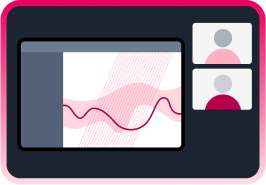Making the case for a more human approach to digital analytics

This guest post is part of our Continuous Product Design (CPD) Evangelist series.
Tiankai Feng is Global Director, Voice of Consumer Analytics at adidas. In this post, Tiankai reflects on the need for a more human-centered approach to digital analytics and doing the right thing for consumers and stakeholders.
“You have no control: Who lives, who dies, who tells your story?” — Hamilton
Yeah, that’s right. I bet you didn’t expect an article about analytics to start with a quote from a Broadway musical, but here we are. Just like Hamilton is about US history on the surface, analytics is just about data and algorithms.
Indeed, for both, it’s really about humanity, our values, and the personal motivations that drive political leaders as equally as analysts. Although we can’t control our legacy and how we will be remembered, we can at least try to do the right thing—the human thing.
There is no doubt that COVID-19, Black Lives Matter, and all the other major events that occurred this year will have a long-lasting economic, social, and political impact around the world.
For the purposes of this post, I will draw on my experience as a digital analyst, focus on the impact on the consumer, and fundamentally how brands have to reshape how they interact with their customer data.
How digital analysts can inspire a more human approach to analytics
Brands are scrambling to balance commercial motivations with consumer understanding. The right balance is hard to find, but definitely possible.
When it comes to analytics, we’re in a peculiar situation where much of our collected digital consumer data over the last few years aren’t as applicable anymore. We’re living through great upheaval. There are heightened sensitivities for public health, politics, society and so much more.
It’s now key, more than ever, to turn very timely and recent consumer data into quick insights to make the best consumer-centric decisions. Since missing data fails to provide patterns to predict the future objectively, another process is making its comeback: human judgement.
In this article, I want to make a case for a more human approach to analytics moving forward— specifically for two audiences: the digital analysts, who can share this article with their collaborators to inspire an attitude change, and those who work with digital analysts, who can get a small peek into their minds and thought processes in the current climate.
1. Consumers are human beings
With the explosion of the internet, online consumer behavior has created masses of data from all over the web—which digital analysts and data scientists use to make all kinds of advanced analysis for more effective and faster decision-making.
We had come to a point where digital analysts were used to some structure and meaning in consumer behavior data, and it became easier to start creating routine in data analysis. But this year, all of this changed, and a lot of previous behavioral patterns don’t apply anymore.
To really understand this new consumer behavior, we have to look within ourselves and use our human empathy, and thereby make our analysis more meaningful.
2. Clients and stakeholders are human beings
Our collaborators who rely on our analytical insights and recommendations have gotten used to a certain way of receiving and consuming data-driven knowledge. However, with the drastic changes this year, they have had to get used to a new world as well—and the need for data-driven support has never been more important.
Although this usually sounds like good news to analysts, we have to understand that the economic impact is creating additional pressure to act fast, so analytics clients and stakeholders need tailored, easy to implement solutions to be able to respond quickly.
As analysts, we can’t rely only on a one-size-fits-all solution for all our stakeholders or clients anymore. We have to understand the human side to provide the best customized processes and solutions possible to continue a strong and effective collaboration.
3. Vendors and partners are human beings
As analysts, we also rely on expertise and tools from reliable partners. But these times are impacting them as well, because they want to stay relevant but have to adapt very fast to new needs from analysts.
Just like we’re not confident in these times to deliver 100% bullet-proof services and products to our stakeholders, we have to understand that vendors and partners are in the same situation with us.
Let’s not forget to treat our agencies, tool providers, and consultants with respect, and understand the limitations and opportunities on both sides. Ideally, we create the right environment as a win-win for everyone.
4. Analysts are human beings
Now, let’s talk about ourselves: We analysts are also human beings, and our goal is not to be the most efficient data-production machines or sending emails out as fast as possible. We are looking to create an impact. That means having collaborators work with us to implement our recommendations in actions, and thereby driving positive change in the consumer world.
And while this seems like an obvious statement to make, now is the time to also openly talk about it—because these times can be tiring and frustrating, analysts have to stick together in solidarity and provide opportunities and motivations that enable all of us to make a difference.
Lastly, all of the ideas above are not just things to consider in current times—they are generally good ideas. We need to remind ourselves to think this way. By being more human in the ways we interact and use analytics, I am sure that even in these difficult times, data will be the key to making sense of this “new normal.”
Let’s not forget to be human-beings—in any situation.







